In the End My Immaculate Heart will Triumph
May 30, 2015 by Peter Howard
“Hail, Holy Queen! Hail, our life our sweetness and our hope!” Mary is our hope. And the Church proclaims it every day at the end of every rosary and often at the end of the Church’s Night Prayer (or Compline). In our modern times, no other words draw our attention to this reality than the promise Our Immaculate Mother made to the world on July 13, 1917 when she said:
I shall come to the world to ask that Russia be consecrated to my Immaculate Heart, and I shall ask that on the First Saturday of every month Communions of reparation be made in atonement for the sins of the world. If my wishes are fulfilled, Russia will be converted and there will be peace; if not, then Russia will spread her errors throughout the world, bringing new wars and persecution of the Church; the good will be martyred and the Holy Father will have much to suffer; certain nations will be annihilated. But in the end my Immaculate Heart will triumph. The Holy Father will consecrate Russia to me, and she will be converted, and the world will enjoy a period of peace. In Portugal the faith will always be preserved…
Conversion brought about by consecration to the Immaculate Heart of Mary . . . Why through a heart? And more specifically, the Immaculate Heart of Mary? Mary is rightly called “most humble,” so
this request seems a bit strange, that Mary would seem to draw attention to herself. But, also remember that Mary is always the humble “handmaid of the Lord” and inseparable Spouse of the Holy Spirit. That means Mary does nothing without being prompted by the Holy Spirit. Her will is only what God wills of her and through her. So, with these words, Mary points to the cor (pun intended) of authentic Christian spirituality.
The heart embodies everything that makes up the human person. And when God became Man, he assumed a perfect human nature, at the center of which is the heart. And whose human nature did Christ assume? 
Mary’s. Thus everything that made up the Sacred Heart of Jesus came from the human nature of the Immaculate Heart of Mary. That is why Mary can say even more truly than the priest: “This is my Body . . . This is my Blood” when speaking of the Holy Eucharist. There is such an inseparable union between the Hearts of Jesus and Mary that we come to the Sacred Heart of Jesus only through the Immaculate Heart of Mary – for the Sacred Heart of Jesus came to us through the Immaculate Heart of Mary. And we see this reality mystically continued at the Cross where the life-giving Blood and Water which flowed from the pierced Heart of Jesus is communicated to His Mystical Body through the pierced Heart of Mary to Whom Jesus entrusted His Church.
This is what is at the heart of Jesus’ final gift to the Church during His exchange between His Mother and every beloved disciple (represented by St. John who was deliberately unnamed): “Woman, behold your Son! . . . Behold your mother” (Jn 19:26-27). This exchange between Jesus, Mary and His Church was the central passage of St. John Paul II’s encyclical letter Redemptoris Mater, which sets out the strong biblical and theological foundations for why total consecration to Mary is at the heart of the Christian life. So much did St. John Paul II believe this that he took St. Louis De Montfort’s short prayer of consecration to Mary as his papal motto: Totus Tuus [sum Maria] and summarized its significance by his papal coat of arms which introduced a distinctive “M” under the Cross, directing our attention to John 19:26-27.
Now, what is the significance of adding “Immaculate” to Heart of Mary? Here, I encourage you to read the Marian teachings of St. Maximilian Kolbe whose insights into the relationship between Mary and the Holy Spirit are wrapped up in Mary’s self-revelation of her name at Lourdes in 1859 when she said: “I am the Immaculate Conception.” St. Maximilian saw in these words a 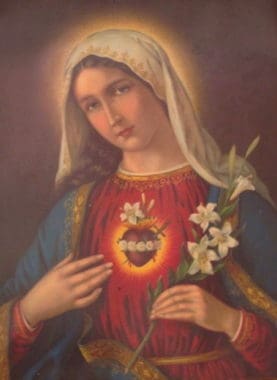
revelation of Mary’s union with the Holy Spirit that has yet to be explored with special attention by the Church because the Holy Spirit is rightly called the uncreated Immaculate Conception of the eternal Love between the Father and the Son. And now Mary at Lourdes is compelled by the Holy Spirit to reveal that she shares the same name. How is that? This takes the understanding of Mary as Spouse of the Holy Spirit to a whole new level, since spouses indeed share the same name. Mary the created Immaculate Conception is inseparably united to the uncreated Immaculate Conception where everything her Spouse is by nature is hers by grace – and she, in turn, is totally possessed by the Holy Spirit where everything she has is His. This is the essence of St. Maximilian’s teaching on Mary and the Holy Spirit of which St. John Paul II said:
. . . possesses a doctrinal accuracy that enchants those familiar with the keystone of Vatican II, the Constitution on the Church, Lumen Gentium. One is tempted to say that he had foreseen, even in its wording, the admirable eighth chapter consecrated to the Virgin Mary. (Immaculate Conception and the Holy Spirit, Monteau-Bonamy, 1977 ed., p. xxiii).
Consecration to the Immaculate Heart of Mary, therefore, inserts the Christian into the heart of the Life of the Spirit, and in the most perfect of ways. It is the most perfect of ways because it is “the Way” by which God chose to empty Himself upon humanity and give us His Divine Life. The Christian life is nothing less than returning to God by patterning itself on the Life of Jesus Christ Who came to us through Mary. And the mystery of the Immaculate Heart of Mary points to the Holy Spirit, whose spousal union with Mary makes her Immaculate. This spousal union points to Mary’s power since the fullness of grace dwells in her because she is the Holy Spirit’s unique spouse. Where Mary is, there is her Spouse, and the more Mary is present in a soul, the more the Holy Spirit is present with grace and power in that soul. What do we find where that spousal union is invited and nurtured? Jesus Christ, the God-Man, who is always the fruit of the union of Mary and the Holy Spirit.
This is why we consecrate ourselves to the Immaculate Heart of Mary and why the triumph over the evils of the world will come through the Immaculate Heart of Mary. And this is why St. Louis De Montfort could write with conviction:
No other devotion calls for more sacrifices for God, none empties us more completely of self and self-love, none keeps us more firmly in the grace of God and the grace of God in us. No other devotion unites us more perfectly and more easily to Jesus. Finally, no devotion gives more glory to God, is more sanctifying for ourselves or more helpful to our neighbour (True Devotion to the Blessed Virgin, St. Louis Marie de Montfort, paragraph 118)
St. John Paul II singled out De Montfort as a reliable teacher of the spirituality of total consecration to Mary (cf. Redemptoris Mater, para 48). And he exhorts us to adopt this spirituality because of its immeasurable fruits:
It is well known that the more her children persevere and progress in this attitude [of total consecration to Mary], the nearer Mary leads them to the “unsearchable riches of Christ (Eph. 3:8) [Redemptoris Mater, 46].
Our Lady of Fatima therefore invites us directly to this crowning of Christian spiritualities. Let us humbly and prayerfully take this invitation to heart because it is a special gift that not all will understand and even fewer embrace. Why? St. Louis De Montfort explains:
As this devotion essentially consists in a state of soul, it will not be understood in the same way by everyone. Some—the great majority—will stop short at the threshold and go no further. Others – not many – will take but one step into its interior. Who will take a second step? Who will take a third? Finally who will remain in it permanently? Only the one to whom the Spirit of Jesus reveals the secret. The Holy Spirit himself will lead this faithful soul from strength to strength, from grace to grace, from light to light, until at length he attains transformation into Jesus in the fullness of his age on earth and of his glory in heaven (True Devotion to Mary, 119).
Consecration to the Immaculate Heart of Mary is a secret? The Holy Spirit, through Our Lady at Fatima and the teachings of Sts. Maximilian and John Paul II, clearly doesn’t want it to remain so. And if this is the first time you are learning of it, consider yourself now privy to this secret.
But, there is a caveat emptor . . . Remember, knowledge is responsibility. What will you do with this knowledge
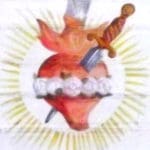
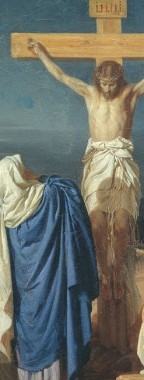

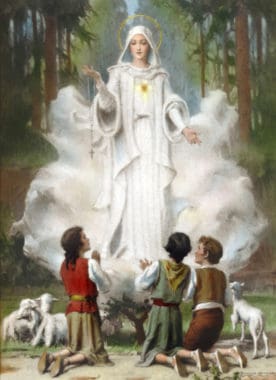
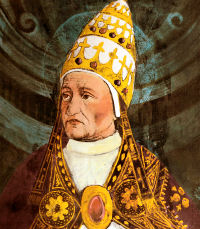
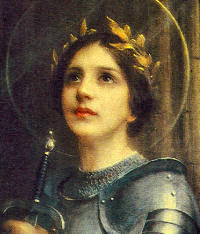 From her earliest of years Joan was known for her obedience to her parents, religious fervor, goodness, unselfish generosity and kindness toward her neighbors. Simonin Munier, one of Joan's childhood friends, tells how Joan had nursed him back to health when he was sick. Some of her playmates teased her for being 'too pious.' Others remembered how she would give up her bed to the homeless stranger who came to her father's door asking for shelter.
From her earliest of years Joan was known for her obedience to her parents, religious fervor, goodness, unselfish generosity and kindness toward her neighbors. Simonin Munier, one of Joan's childhood friends, tells how Joan had nursed him back to health when he was sick. Some of her playmates teased her for being 'too pious.' Others remembered how she would give up her bed to the homeless stranger who came to her father's door asking for shelter.